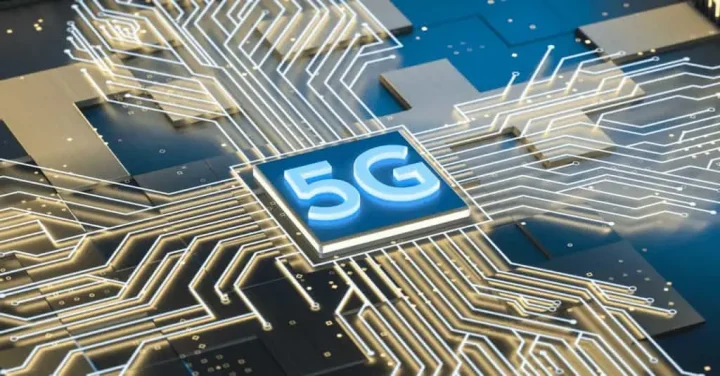As the demand for faster connectivity and smarter devices grows, industries are turning to advanced technologies like 5G and the Internet of Things (IoT) to shape the future. At the heart of these innovations lies a critical component—High Frequency PCB. These specialized circuit boards are key to driving the performance and reliability of 5G and IoT systems. In this article, we’ll explore the role of High Frequency PCBs in these technologies and what the future holds for them.
What Are High-Frequency PCBs?
High Frequency PCBs are printed circuit boards designed to operate at higher frequencies than traditional PCBs. These PCBs are used in applications where signal integrity and speed are crucial. They’re designed to reduce signal loss, interference, and noise, making them essential for high-performance communication systems like 5G and IoT devices.
Why High-Frequency PCBs Matter
High-frequency applications demand precision and efficiency. High Frequency PCBs are engineered to handle signals in the GHz range, a requirement for next-generation technologies like 5G. The materials used in High Frequency PCBs are specially chosen to minimize signal loss and maintain high-speed data transmission.
The Role of High-Frequency PCBs in 5G Technology
5G’s Demanding Requirements
5G technology is built on the promise of ultra-fast internet speeds, low latency, and massive device connectivity. To meet these demands, the technology relies heavily on High Frequency PCBs. These PCBs play a crucial role in ensuring that the signals remain strong and clear even in crowded and complex networks.
High-Frequency PCBs Enable Faster Communication
High Frequency PCBs are essential for 5G base stations, antennas, and mobile devices. They ensure minimal signal loss during transmission, which is crucial for maintaining high speeds and reliability. With the increasing number of devices needing to be connected simultaneously, High Frequency PCBs ensure smooth data flow, enabling 5G to deliver on its promises.
Challenges in 5G Deployment and How High-Frequency PCBs Help
5G infrastructure faces significant challenges, including the need for high-density components and minimal signal degradation over long distances. High Frequency PCBs address these challenges by offering the necessary speed and signal integrity. With materials like PTFE (Polytetrafluoroethylene) and ceramic composites, High Frequency PCBs can maintain stable performance even in demanding environments.
High-Frequency PCBs in IoT: Enabling Smarter Devices
IoT’s Growing Demand for Efficient Communication
The IoT ecosystem continues to expand, with billions of devices expected to be interconnected in the coming years. These devices rely on fast, reliable communication to function properly. High Frequency PCBs are critical in enabling these devices to send and receive data without signal interference or loss.
High-Frequency PCBs for IoT Sensors
In IoT, sensors play a vital role in gathering real-time data. Whether in smart homes, wearables, or industrial monitoring systems, sensors need to transmit data efficiently. High Frequency PCBs are used to ensure the smooth transmission of these signals, making it possible for IoT devices to respond in real-time.
Miniaturization and Integration in IoT Devices
As IoT devices become smaller and more integrated, High Frequency PCBs help make this possible. They allow for compact designs without compromising on performance. High Frequency PCBs can be manufactured with smaller components, enabling devices to be both lightweight and powerful.
The Future of High-Frequency PCBs
Advancements in Materials for Better Performance
The future of High Frequency PCBs lies in the continuous development of advanced materials. As 5G and IoT technologies evolve, the need for faster, more reliable PCBs will grow. Materials like low-loss substrates, ceramics, and new laminates will drive the next generation of High Frequency PCBs, allowing them to handle even higher frequencies and more complex systems.
Increased Demand for High Frequency PCB in Emerging Technologies
Beyond 5G and IoT, High Frequency PCBs will become crucial in other emerging technologies like autonomous vehicles, satellite communication, and augmented reality. These technologies require high-speed, low-latency communication, and High Frequency PCBs are the key to making them a reality. As industries like automotive and aerospace adopt more advanced communication systems, the demand for High Frequency PCBs will continue to rise.
Automation in PCB Manufacturing
With the increasing complexity and demand for High Frequency PCBs, the manufacturing process will also evolve. Automation and advanced manufacturing techniques will play a key role in producing High Frequency PCBs more efficiently. This will allow for better quality control, higher production volumes, and faster delivery times, ultimately driving down costs and making these advanced PCBs more accessible.
Challenges and Opportunities for High Frequency PCBs
Challenges in Manufacturing High-Frequency PCBs
While the demand for High Frequency PCBs continues to grow, manufacturers face several challenges. The complexity of these PCBs requires highly specialized equipment and materials, making them more expensive to produce. Additionally, the need for precise testing and quality assurance adds to the cost and complexity of manufacturing.
Opportunities in the Global Market
Despite these challenges, the opportunities for High Frequency PCBs in the global market are significant. As industries across the world push for faster, more reliable communication, the need for advanced PCBs will continue to grow. Manufacturers who can innovate and adapt to these needs will be well-positioned to capitalize on the expanding market.
Conclusion
As we look to the future, High Frequency PCBs will remain at the forefront of 5G and IoT advancements. Their ability to ensure high-speed, low-latency communication is essential for the success of these technologies. With continuous innovations in materials, manufacturing processes, and design, High Frequency PCBs will evolve to meet the growing demands of the digital age. From enabling faster mobile networks to making IoT devices smarter and more efficient, High Frequency PCBs will continue to shape the future of technology in exciting ways.
In summary, the future of High Frequency PCBs is bright, and they will continue to be a critical component in the development of faster, smarter, and more connected devices. As the world becomes increasingly interconnected, these PCBs will remain an essential part of the technological infrastructure that powers 5G, IoT, and beyond.





























